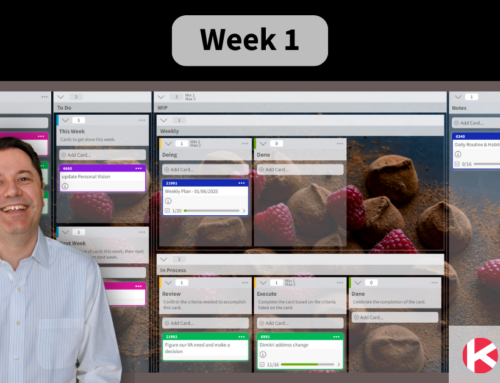
One of the main ceremonies of Scrum is the Daily Stand-up Meeting or Daily Scrum. Daily stand-up meetings originated in software development but it’s no surprise if you’ll hear your sales, marketing, operations, or support teams having them. Because of its benefits, daily stand-up meetings have been happening outside of software development teams. If you haven’t done a daily stand-up with your team and are curious to start one, we’re giving you six surefire tips to plan and run effective stand-up meetings.
What is a Stand-up Meeting?
The daily stand-up meeting started in Scrum, one of the more popular Agile methodologies. In Scrum teams, they refer to it as Daily Scrum. The idea is for the team to meet for a few minutes each day and give a rundown on their progress towards their Sprint goals. The Scrum guide defines it as a “15-minute event for Developers of the Scrum Team…to inspect progress toward the Sprint Goal and adapt the Sprint Backlog as necessary, adjusting the upcoming planned work.”
But why is it called a stand-up meeting you may ask?
In daily stand-up meetings, team members are required to meet while standing. When team members meet while sitting in a meeting room, it’s easy to detach themselves from the discussion. Some may pull out their mobile phones or open their laptops. But when team members meet while standing, the uncomfortable position limits them to prolong the discussion and increases their focus. Because let’s face it, no one wants to stand on their feet for too long.
And this is why it’s called a stand-up meeting.
Purpose of Stand-up Meetings for Agile Teams
While others cringe at the thought of having yet another meeting on their calendar, daily stand-up meetings provide many benefits for teams. And it can actually save teams from taking less important meetings.
Transparency
During stand-up meetings, everyone needs to contribute something to the table. Everyone gets a chance to speak. By giving each team member a few minutes each workday to share their progress, they will be more honest about their work.
Catch Issues Faster
Stand-up meetings encourage team members to surface challenges as soon as they recognize them. This allows the team to resolve issues much faster too. This will save you from a longer meeting (and tons of stress) when the issue escalates because the team wasn’t able to act fast enough on it.
Teamwork and Collaboration
Stand-up meetings build rapport. Talking to your teammates more often will help you become comfortable in working with them. And because teams openly discuss their challenges and progress, it also becomes easy for everyone to pitch in and extend a hand when needed.
Keeps Teams on Track
Stand-up meetings help teams stay on track of their goals. When everyone knows how each team member is progressing on their tasks, it helps them adapt their course so that they can meet their commitments as much as possible.
6 Tips on Planning Effective Stand-up Meetings
Ready to start planning for your first stand-up meeting? Here are 6 tips to help you get started.
Same Time, Same Place
Book a regular schedule for your daily stand-up meetings. This helps everyone to align their work schedules and promote consistency. As for the time, I recommend having it at the start of the workday so that your team will be more focused. It also sets the tone for the rest of the day.
Team Members Only
Daily stand-up meetings are for the team’s benefit. It should not serve as a status report meeting for your project manager. When this happens, the team might end up not collaborating and might only bring up “good updates” so as not to get on the bad side of the manager. Having someone apart from the team join the meeting can disrupt the flow or prevent team members from opening up.
Keep It Short
Stick to the 15 minutes allocation as much as you can. At most, you can stretch up to 30 minutes but nothing over than that. The usual format for daily stand-up meetings require team members to answer the following questions:
- What did I do yesterday?
- What will I do today?
- Do I have impediments to my work?
By keeping to this format, you can keep your meeting time at a minimum. You should also not use your daily stand-up meetings to come up with solutions to issues. If an issue is brought up during the stand-up, take note of it and set aside time to discuss it after the stand-up.
Talk About the Current Sprint Only
During your daily stand-up meetings, avoid talking about tasks or items that don’t have anything to do with your current sprint or current set of tasks. This keeps your meetings focused and ensures that everyone can benefit from the discussion. If an item that is not relevant to the current is brought up during the stand-up meeting, take note of it and schedule a different session to discuss it in much detail.
Use Your Task Board
A good way to keep your team members focused on sharing only relevant items during stand-up meetings is to show your task board. This can be your Scrum board, Kanban board, or any visual task tool that your team uses. This gives team members something to point to during the discussion and helps everyone visualize what another team member is working on. Use your daily stand-ups to also ensure that your tasks are updated and reflected on your board.
Probe for Impediments
If you’re facilitating your daily stand-up meetings, it’s your responsibility to encourage your teams to freely share any challenges that they’re encountering. For teams that are new to daily stand-ups, they might get uneasy with sharing that they’re having trouble with their tasks. For teams that have been doing stand-ups for quite some time, they might get used to say they have “no blockers” when asked for impediments. I’ve had my fair share of those.
So if you’re facilitating the stand-ups pay close attention to the updates on their tasks. Check if a task card has stayed in the same status for quite a while. If there are only a few days until the end of the sprint and some tasks seem to be far from getting done, point it out. The key is to take cues from your team’s updates and the task board to spot possible bottlenecks and issues. Lastly, make it clear to your team that impediments need to be resolved by the team or else your Sprint goal can be jeopardized.
Challenges of Virtual Stand-up Meetings
Since the majority of us are working remotely nowadays, many are doing their stand-up meetings virtually. While the mechanics stay the same, conducting virtual stand-ups can be challenging. The lack of physical presence can entice teams to zone out of the stand-ups or worse, skip it altogether. But this shouldn’t stop you from having your stand-up meetings. In fact, you should put more importance on it because it helps your teams stay connected and in sync.
When doing virtual stand-up meetings, make sure to still book a common time for your team. Whenever possible, do video conferencing and make sure everyone turns their camera on. This helps establish rapport and forces them to focus on the call.
If booking a common time is difficult for you because you’re working with a highly distributed team across different time zones, one option is to run your stand-ups via team chat. If you’re using Slack, you can set a daily stand-up channel and create a thread for each stand-up meeting. But don’t let your team’s updates be thrown into the abyss. Make sure to review them and discuss any issues as a team. Make sure you explore other remote collaboration tools to ensure your team can collaborate and communicate anytime, anywhere.
Whether in person or virtual, there’s no denying that daily stand-up meetings are a valuable tool to encourage collaboration, communication, and focus for your Agile teams. By applying our 6 tips, you can ensure that you’re getting the best out of your stand-up meetings and effectively deliver on your commitments and goals. To help you further in implementing Scrum, check out our Scrum board templates.
Learn to Work Smarter, Not Harder!
Get our top articles weekly.
Table Of Contents
Discover many more posts…







